Monastery and Site of the Escorial in Madrid: Royal Monastery of San Lorenzo de El Escorial is also known as El Escorial. El Escorial was built in 1563-1584 by Philip II of Spain. El Escorial is situated in a nature setting with gardens and orchards. El Escorial functions as a royal palace, monastery, school, museum and mausoleum. The interior of El Escorial is adorned with marble and frescoes, it houses masterworks of art, the library contains forty thousands books. Under the High Altar of the Basilica of El Escorial is the Royal Pantheon. The Crypt of the Kings consists of twenty-six marble sepulchers containing the remains of almost every Spanish monarch since Charles V. The UNESCO World Heritage Aranjuez Cultural Landscape with the spring residence of King Philip II of Spain is situated about 47 km south of Madrid. The Monastery and Site of the Escorial in Madrid gained the status as a UNESCO World Heritage in 1984.
www.werelderfgoedfotos.nl © Copyright World Heritage Photos
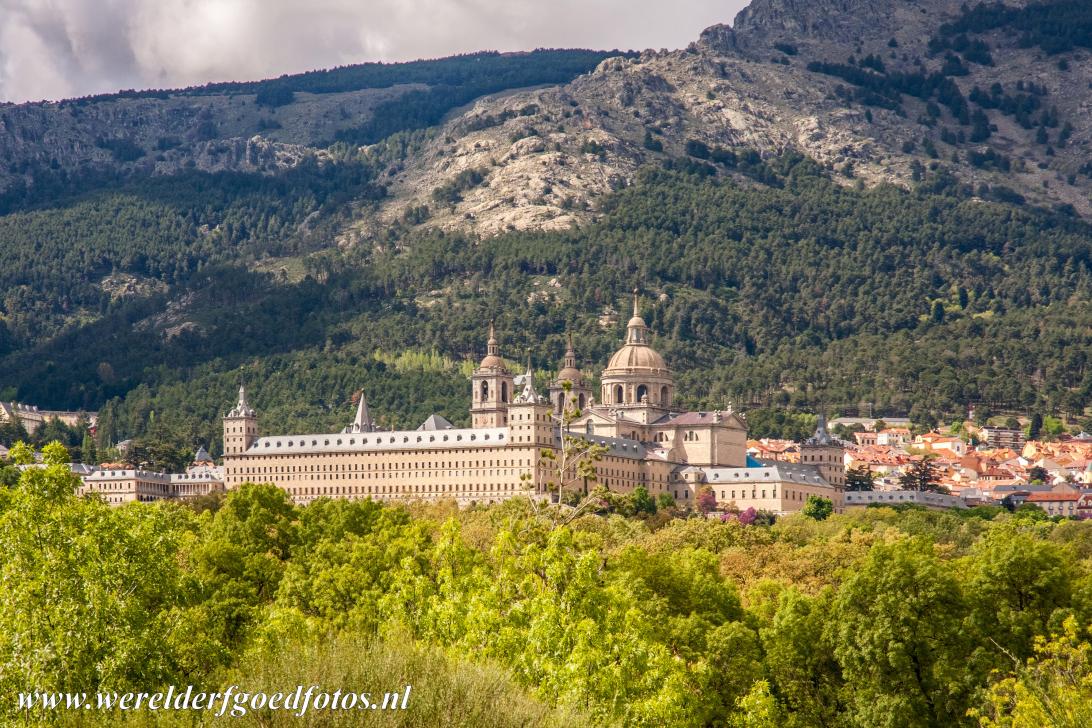
The Royal Monastery of San Lorenzo de El Escorial in Madrid is commonly knownas El Escorial. El Escorial was built for Philip II of Spain. The floor plan of El Escorial is based on the floor plan of King Solomon's Temple. El Escorial is the burial site for the Spanish Royal Family. The Royal Monastery of San Lorenzo de El Escorial in Madrid became a UNESCO World Heritage in 1984.

The Royal Monastery of San Lorenzo de El Escorial in Madrid is commonly knownas El Escorial. El Escorial was built for Philip II of Spain. The floor plan of El Escorial is based on the floor plan of King Solomon's Temple. El Escorial is the burial site for the Spanish Royal Family. The Royal Monastery of San Lorenzo de El Escorial in Madrid became a UNESCO World Heritage in 1984.
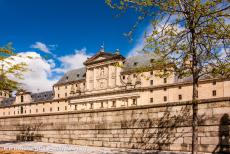
Monastery and Site of the Escorial in Madrid: The main façade of El Escorial in Madrid. The Royal Monastery of San Lorenzo de El Escorial was built in 1563-1584 for King Philip II of Spain. He was a passionate collector of art. The palace houses numerous great masterworks of art, the library contains about forty thousands books, among them priceless manuscripts.
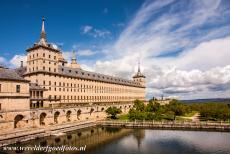
Monastery and Site of the Escorial in Madrid: The interior of El Escorial is adorned with marble and frescoes. El Escorial was designed by Juan Bautista de Toledo, a Spanish pupil of the famous artist Michelangelo. After the death of de Toledo in 1567, the building was completed by Juan de Herrera. El Escorial functions as a royal palace, monastery, museum, school and mausoleum.
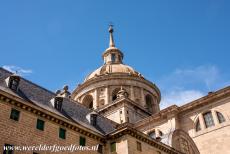
Monastery and Site of the Escorial in Madrid, Spain: The design of the dome of the Basilica of El Escorial was influenced by the dome of St. Peter's Basilica in Rome. The Royal Crypt lies beneath the basilica. The Pantheon of the Kings contains the tombs of Spanish monarchs, the Pantheon of Infantes is the final resting place of many other members of the Royal Family of Spain.
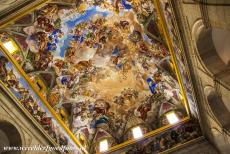
Monastery and Site of the Escorial in Madrid: The dome of the basilica is adorned with colourful frescoes. The design of the dome of the Basilica of El Escorial was influenced by the dome of St. Peter's Basilica in Rome. El Escorial houses an important collection of paintings made by artists such as Bernini, El Greco, Titiaan and Hiëronymus Bosch.
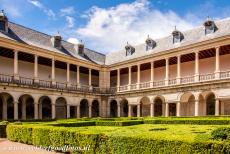
Monastery and Site of the Escorial in Madrid: The Galeria de Convalecientes is a south-facing garden of the El Escorial. The Friar's Garden runs also along the south façade and provides one of the most beautiful views of the surrounding landscape. Today, the Friar's Garden is still used by the students of the El Escorial school to study and relax.
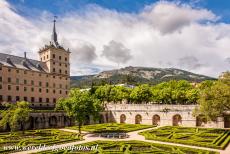
Monastery and Site of the Escorial in Madrid: The Jardin de la Reina is the private Garden of the Queen. El Escorial in Madrid has several gardens and courtyards. The immense palace of the El Escorial can be considered as a symbol of the might of the Kings and Emperors of the Spanish Habsburg dynasty and the Spanish Empire in the 16th and 17th centuries.
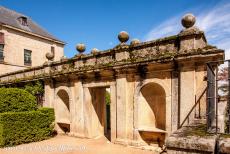
Monastery and Site of the Escorial in Madrid: The Garden of the King and Garden of the Queen are enclosed by granite walls adorned with niches. The niches contain a granite bench to sit on. The Monastery and Site of the Escorial in Madrid was inscribed on the UNESCO World Heritage List in 1984.
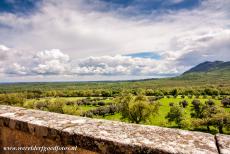
Monastery and Site of the Escorial in Madrid: King Philip II of Spain was a nature-loving king, El Escorial is situated in a natural setting with gardens, orchards and a forest. El Escorial comprises of two architectural complexes, the royal monastery the Escorial and La Granjilla de la Fresneda, a royal hunting lodge and monastic retreate located about five kilometres away from El Escorial.
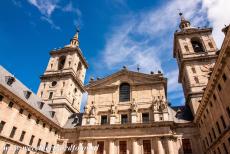
Monastery and Site of the Escorial in Madrid: The Courtyard of the Kings and the Basilica of El Escorial. Under the High Altar of the Basilica is the burial place for Spanish kings. The Pantheon of the Kings in the Royal Crypt consists of twenty-six marble sepulchers containing the remains of almost every Spanish monarch since the Emperor Charles V.
